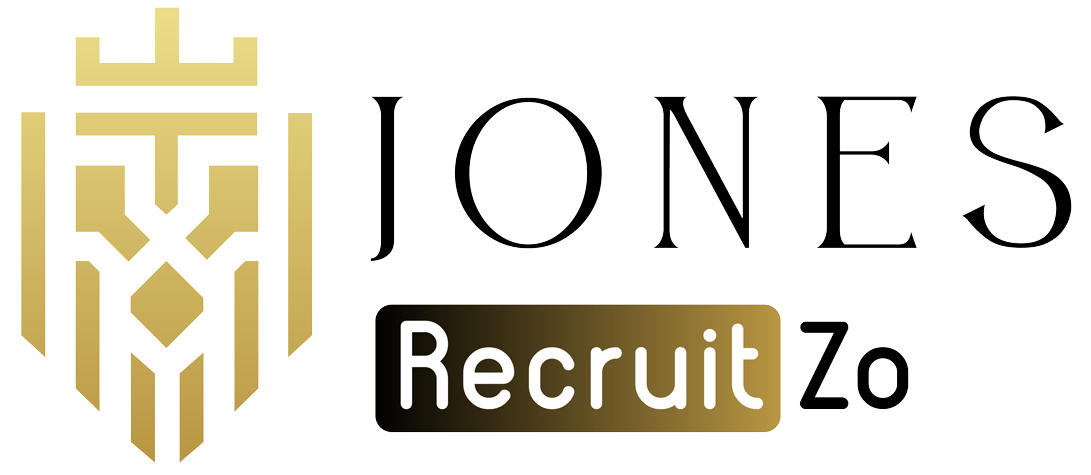What is HR Service Delivery (HRSD)?
HRSD implies a well-thought-out delivery mechanism by which HR delivers services to employees, managers, and other stakeholders. To comprehend what HR service delivery is, it is critical to view it as a key strategic means in terms of improving service to the employees and effective operations.
Key Components of HR Service Delivery
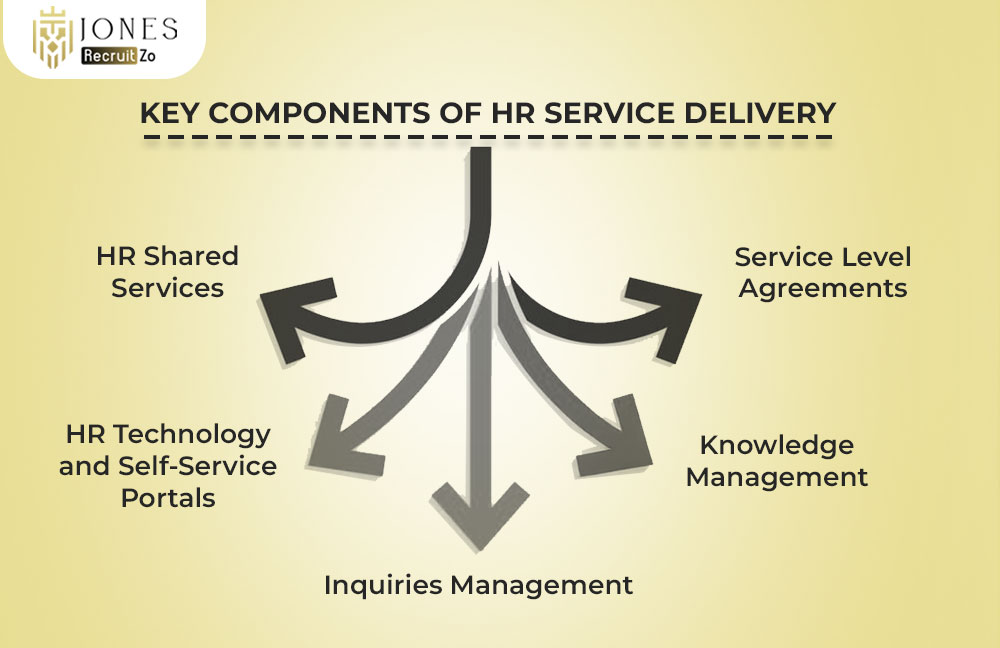
A contemporary model of service delivery in the area of HR entails the incorporation of integrated technologies, centralised service centres, and well-articulated procedures to provide a streamlined support mechanism to employees. These elements guarantee a speedy response and levelling during all the functions of the human resource in the organisation.
HR Shared Services
HR shared services bring routine HR functions into common areas, including payroll processing, benefits processing, and the like. This enables the organisations to provide uniform human resources service and, at the same time, enables the HR professionals to attend to strategic duties instead of administrative duties.
HR Technology and Self-Service Portals
The use of self-service portals and HR technologies allows employees to manage their data, personal requests for leave, and access to pay stubs. These applications constitute the backbone of HRSD in the digital environment that is characterised by increased convenience and reduced manual input in the service delivery.
Enquiries Management
The management of enquiries during service delivery ensures that the queries of employees are monitored, addressed on time, and documented to be analysed in the future. Proper management of requests enhances the loyalty of employees and simplifies the human resources work in departments.
Knowledge Management
The knowledge management system enables the HR teams to archive and distribute important policies and frequently asked questions, as well as procedures. This makes it easier to make better decisions and improves the overall delivery of the service in HR through the availability of correct information at the correct time and place.
Service Level Agreements
Response and resolution time is determined in the Service Level Agreements (SLAs), and this guarantees accountability in the human resources service processes. Through matching the performance of the HR to business expectations, SLAs facilitate the delivery of quality services.
Types of HRSD Models
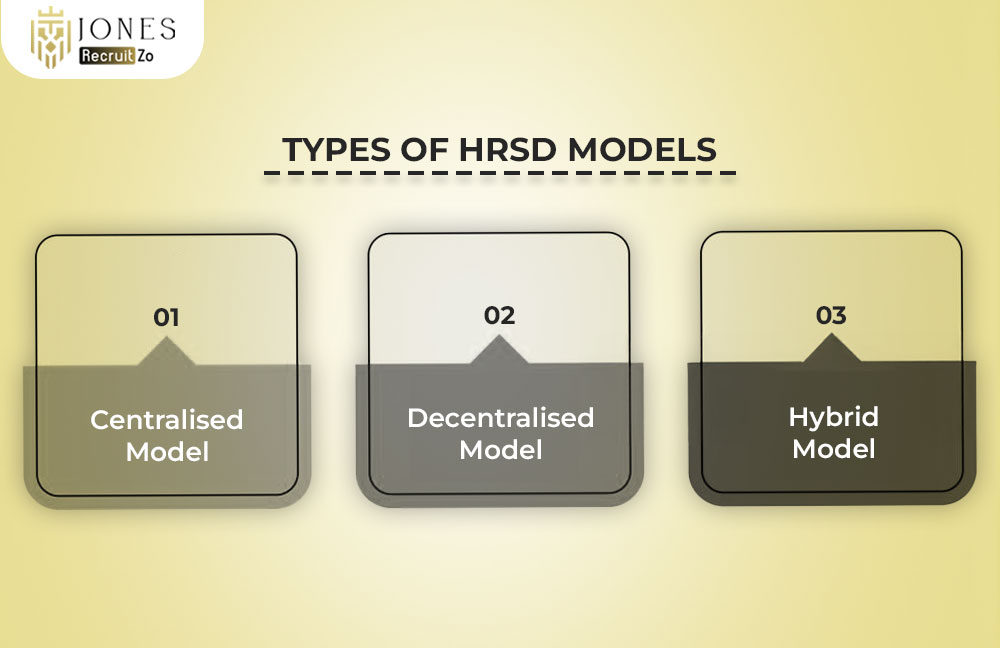
Depending on the size, structure, and culture of an organisation, there are different models of HR delivery services. The selection of the model can help HR immensely in terms of efficiency or employee satisfaction and can be scalable and flexible in the application of HR tasks.
Centralised Model
The centralised model brings together all HR services in one place. This structure develops more control and congruency in the operations of human resources, as well as having an excellent prospect in companies that seek to minimise replication and develop a heightened level of standard service delivery.
Decentralised Model
In a decentralised system, the HR services are provided locally at various locations or units. Even though it would provide greater autonomy, it can disrupt standardisation and effective HRSD, particularly in the bigger businesses that have varying workforce requirements.
Hybrid Model
A hybrid model of service delivery in the HR setting is a mixture of centralised and decentralised systems. This laxity enables organisations to find a middle ground between localisation and centralisation of governance issues on human resources service practice.
Why Is HR Service Delivery Important?
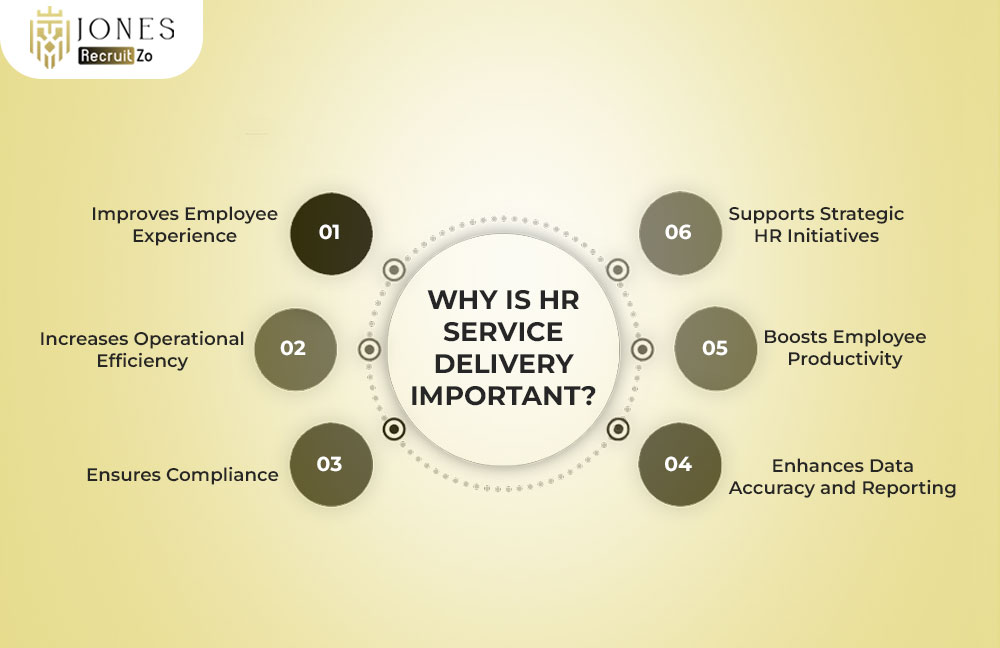
The knowledge of what HR service delivery is enables organisations to realise its usefulness in the support provided to their employees, efficiency, and anchoring the HR services to strategic objectives. A good HRSD facilitates easier operations and improved business results.
Improves Employee Experience
The contemporary HR service delivery is centred on delivering a personal and responsive service, which enhances the interest and involvement of the employees. An efficient HR experience increases trust and enables the development of an excellent human resources culture in the organisation.
Increases Operational Efficiency
Robotic processes and flow protocols allow a business to optimise tasks so that HR teams can manage large workflows with minimal output. This enhances the efficiency of operation and makes HRSD an important component of enhancing the use of internal human resource processes.
Ensures Compliance
Human resources service delivery by incorporating current and future legal and regulatory changes in processes will also keep the company in place. Important documentation is followed through the systems, which lowers the risks and helps HR to address such sensitive issues professionally and accurately.
Enhances Data Accuracy and Reporting
Proper workforce planning and decision-making can be assisted by accurate data collection and reporting tools. The uses of HR analytics as a part of the HRSD platforms enable human resources professionals to have a more insightful understanding of employee behaviour and organisational trends.
Boosts Employee Productivity
Employees secure real-time support and self-service features and spend less time on administrative activities. A good delivery of services by HR means that less friction is created and the staff is able to concentrate more on their actual work, thereby increasing the overall output.
Supports Strategic HR Initiatives
HR service delivery can also meet the wider business objectives in that it saves time for the HR department to use in strategic undertakings such as talent development or diversity planning. The transition of human resources service paves the way and turns it into a value-giver to organisational success.
Technologies Used in HR Service Delivery
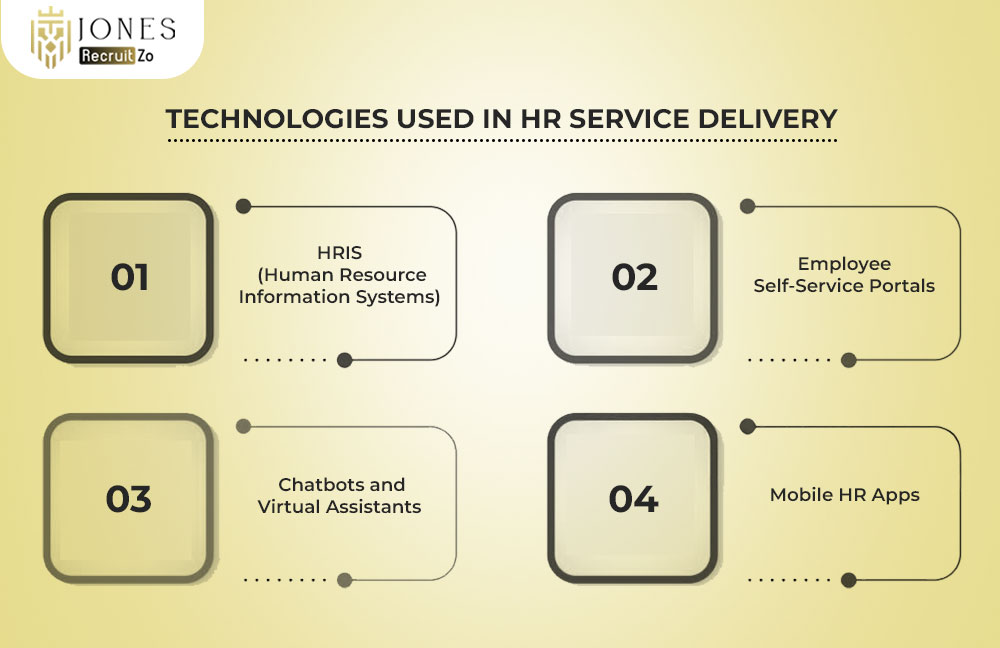
A successful HR service delivery model is entrenched with the right technologies. From automation to analytics, the human resource tools would guarantee smooth, quick, and precise service to employees and management staff.
HRIS (Human Resource Information Systems):
An HRIS is used as the records keeper of employees and an avenue of workflow management. It is a part of HRSD of the present era since these systems are characterised by the ability to provide equal levels of services, including benefits tracking, onboarding, and performance reviews, on the same platform.
Employee Self-Service Portals
Employee self-service portals enable workers to modify personal details, access the policies, and ask questions on their own. In the process of effective HR service provision, they eliminate HR workload and increase the responsiveness of service provision as well as employee satisfaction.
Chatbots and Virtual Assistants
Chatbots are AI tools that solve basic HR questions in real time. The solutions can then enhance the human resources service offering to make it faster and available 24/7, as well as ensure that the HR team can concentrate on other higher-value duties.
Mobile HR Apps
Applications offered by mobile phones make human resources available anywhere, and it is possible to request leave or even view the pay slip anytime and anywhere. The innovations are the logical continuation of digital HRSD, which is in line with a modern, flexible workforce.
FAQs
1) What is HR Service Delivery (HRSD)?
HRSD is the way human resource service is provided to employees with formulated procedures, technology, and systems to better support employees’ compliance and to improve efficiency in the operation of the entire organisation.
2) What are the types of HRSD models?
The types of HR service delivery models are centralised, decentralised, and hybrid. All the models describe how human resources activities are structured, provided, and streamlined to suit business and employees’ purposes.
3) Why Is HR Service Delivery Important?
HR service delivery enhances employee satisfaction, compliance, heightened efficiency, and strategic objectives. An effective HRSD process creates a value-added HR in organisations.
4) What are the key components of HR service delivery?
The key elements are HR sharing services, self-service portals, inquiry management, service level agreements, and knowledge management. This combination constitutes an employee-centred and efficient structure of human resource services.















